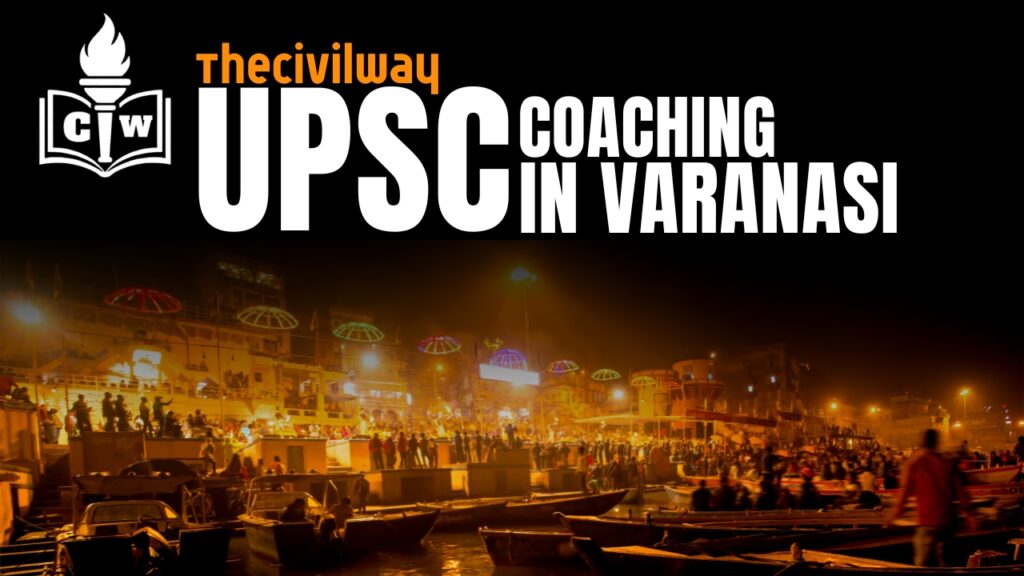Discovering the Best UPSC Coaching in Varanasi: Your Gateway to Success
Explore the top UPSC coaching centers in Varanasi that can help you achieve your civil service dreams with expert guidance and proven strategies. Finding the Best UPSC Coaching in Sigra, Varanasi: A Comprehensive Guide Preparing for the UPSC Civil Services Examination (CSE) is a challenging yet rewarding journey. For aspirants in Varanasi, especially in the Sigra area, choosing the right coaching institute is a crucial first step. Sigra, being centrally located and well-connected, has emerged as a hub for serious UPSC preparation. This guide will help you understand what to look for and which institutes stand out. 📍 Why Sigra, Varanasi? Sigra is one of the most developed and student-friendly areas in Varanasi. With excellent transport, PG/hostel availability, and proximity to bookstores and libraries, it offers a complete academic environment. Many reputed UPSC coaching centers have set up in Sigra, offering both Hindi and English medium programs. ✅ Key Factors to Consider While Choosing a UPSC Coaching Institute: Experienced Faculty:Mentors who have cracked or appeared in UPSC/State PSC exams provide deeper insights and real strategies. Updated Study Material:Institutes that offer regularly updated notes, NCERT coverage, and current affairs analysis stand out. Test Series & Evaluation:Look for institutes with Prelims & Mains test series, answer writing practice, and personalized feedback. Batch Size & Attention:Smaller batches allow better interaction with teachers and doubt-clearing sessions. Past Results:Success stories and selections in UPSC or State PCS exams reflect an institute’s credibility. Fee Structure & Flexibility:Affordable fees with EMI options or discounts can be a deciding factor for many students. 🏆 Top UPSC Coaching Institutes in Sigra, Varanasi: 1. The Civil Way Why It Stands Out: Team of mentors with UPSC and UPPSC experience Strong focus on Prelims, Mains, CSAT, and interview preparation Personalized mentorship and weekly current affairs sessions Affordable fee structure with Hindi & English mediums availableLocation: Sigra, VaranasiWebsite: www.thecivilway.co.in The journey to becoming a civil servant in India is both challenging and rewarding. With the right coaching, aspiring candidates can significantly increase their chances of success in the UPSC examination. In Varanasi, a city known for its rich cultural heritage and educational institutions, you’ll find several options for UPSC coaching. This blog post aims to help you identify the best UPSC coaching in Varanasi that suits your needs. Why Choose Sigra , Varanasi for UPSC Coaching? Varanasi, often referred to as Kashi, is not only a spiritual hub but also an educational one. The coaching institutes here provide tailored programs that cater to the various stages of the UPSC exams. The city boasts a vibrant student community, which enhances the overall learning experience. Additionally, the reasonable fees and dedicated faculty in these coaching centers make Varanasi a preferred choice for many UPSC aspirants. Top UPSC Coaching Centers in Varanasi When it comes to choosing the right coaching center, consider the following options that are known for their excellence in UPSC preparation: 1. Chanakya IAS Academy: Known for its experienced faculty and comprehensive study materials, Chanakya IAS Academy has a proven track record of success. 2. Vision IAS: This institute focuses on a structured curriculum that covers the syllabus and includes regular mock tests to assess progress. 3. The Hindu Zone: A unique platform that offers personalized mentorship and a friendly learning environment, making it an ideal choice for many students. 4. Abdul Kalam Institute: Renowned for its rigorous training and expert advice, this institute emphasizes conceptual understanding and current affairs. 5. Raj Malhotra’s IAS: This coaching center is well-known for its interactive classes and effective preparation strategies. Factors to Consider When Choosing UPSC Coaching Choosing the right coaching center is crucial to your success. Here are some factors to keep in mind: Faculty Experience: Experienced faculty can provide insights and guidance that can make a significant difference in your preparation. Study Material: Opt for institutes that provide comprehensive study materials covering the entire syllabus. Student Feedback: Research testimonials and reviews from previous students to gauge their experience and success rates. Batch Size: Smaller batch sizes often allow for more personalized attention and better interaction with instructors. Location: A convenient location can save time and reduce stress during your preparations. Success Stories from Varanasi Many students from Varanasi have successfully cleared the UPSC exams and are now serving in various prestigious positions. Their stories of hard work and dedication serve as inspiration for aspiring candidates. Engaging with these success stories can motivate you and provide insights into effective study strategies. Conclusion Opting for the best UPSC coaching in Varanasi can significantly enhance your preparation and boost your confidence. By selecting the right institute, you set yourself on the path to success in one of India’s toughest examinations. Remember, consistent effort, strategic planning, and the right guidance will propel you towards your civil service dreams. We wish you the best in your preparation journey!
Discovering the Best UPSC Coaching in Varanasi: Your Gateway to Success Read More »

